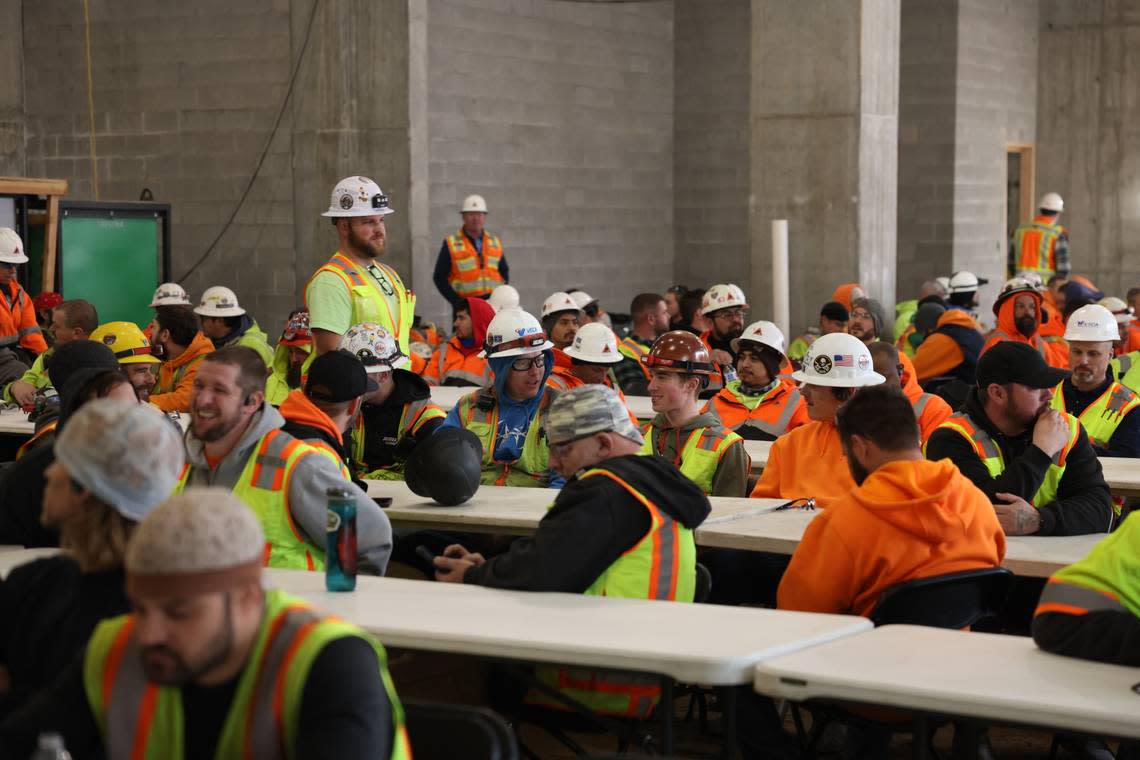Wage increases topped 10% for Idaho workers last year. Who saw the most gains, and where
Idaho’s median hourly wage increased more than 10% in the last year, the Idaho Department of Labor says.
The median wage, or the midpoint between the lowest and highest earners, rose from $19.26 per hour in 2022 to $21.27 per hour in 2023 for a 10.4% increase, according to a news release Tuesday. Every metropolitan statistical area in Idaho saw an increase in median wage of over $1, the department said.
The average hourly wage for all occupations in Idaho was $26.75 per hour in 2023, up 8.3%, or $2.06 per hour. Boise had the largest jump: $2.62.
For people working 40 hours a week, the new median is $851 per week, or $44,242 per year, while the new average is $1,070 per week, or $55,640 per year. High-wage earners lift average wages above the medians.
Boise area pay is a bit higher: the median was $21.79 per hour in 2023 and the average $28.07. The median translates to $872 per week, or $45,323 per year, while the new average is $1,123 per week, or $58,386 per year.
But Idaho’s and Boise’s pay remains below the nation’s, whose median hourly wage for all occupations in 2023 was $23.11 and whose average was $31.48.
Jan Roeser, an economist at the Idaho Department of Labor, said some of the industries that saw the most wage growth in the Boise area were commercial construction, manufacturing and high tech. Wages in lower-skilled jobs, like fast food, retail and accommodations, have also seen gains. In some cases, benefits like sick pay and health insurance were added, she said.

‘A lot of opportunity for workers now’
“There’s a lot of opportunity for workers right now, and the wages show that,” Roeser told the Idaho Statesman by phone. “It’s not just Boise, it’s not just Idaho and it’s not just the U.S.”
As wages rose, so did employment.
Idaho had 822,690 workers in 2023, an increase of about 25,000, or 3.2%, over the state’s tally in 2022. The Boise metropolitan statistical area, which includes Ada, Boise, Canyon, Gem and Owyhee counties, saw the bulk of that employment growth. The area added 14,240 jobs, a 4% gain.
“Our civilian labor force is growing dramatically because of the population growth we’re experiencing,” she said. “The big urban myth was that everyone who is moving here is a retiree. Well, that’s not true.”
The significant increase in wages, Roeser said, was triggered in part by people who left the workforce or retired during the pandemic. While Idaho has experienced a large influx of new residents, many workers chose to stay home to take care of sick or elderly loved ones or to watch their children as COVID-19 restrictions temporarily closed schools.
Employers ‘needed to pay a bit more’
“There were a lot of negatives about the pandemic, but it did bring about some emphasis on what we can do to keep people in the workforce,” she said. “Employers realized they needed to pay a bit more to make it worth it.”
But all the wage gains haven’t necessarily eased worker shortages, especially in the construction industry.
Mega-projects in the Treasure Valley like Micron’s $15 billion expansion in Southeast Boise and Meta’s data center in Kuna have tied up such a large percentage of the state’s construction workers and tradesman that developers and industry insiders told the Statesman in March that the squeeze could hinder other projects, including new apartment complexes and commercial buildings.
Roeser said construction labor shortages have eased but have not sprung back to where they were before the pandemic.
“Do I think they’re in a situation where they have plenty of workers? No,” she said. “A lot of individuals left the construction industry and got into something else. And a lot of young people aren’t thinking about construction. They’re thinking about health care, because there’s a lot of information out there about the health care industry being recession-proof. There’s more of a seasonality to construction.”
Meanwhile, the lowest median wage was $19.80 per hour in southeastern Idaho — the only labor market region with a median or average wage below $20 for 2023, the news release said.
Roeser told the Statesman that Idaho has typically been in the bottom tier of wages for a variety of reasons, including its agricultural sector, but jobs in more urban areas are evolving.
Little praises wage gains
Gov. Brad Little on Tuesday praised the wage gains. He noted that Idaho led the nation in year-over-year nonfarm job growth in March.
“What Idaho is doing is working, and we’re just getting started,” Little said in a news release. “Other states’ economies are lagging while Idaho’s job market and economy keeps surging ahead. Why? Because employers and businesses see what Idaho has to offer – lower taxes, fewer regulations, an enthusiastic workforce, and a high quality of life.”
The new data is from the Bureau of Labor Statistics’ Occupational Employment and Wage Statistics survey.
Idaho income growth tops the nation. Is it becoming an ‘elite state’? What the data says
‘Boomtown’ Boise ranked one of the best cities to live in America in new list. Here’s why
Fears mount for Idaho construction industry as billion-dollar mega-projects move forward
